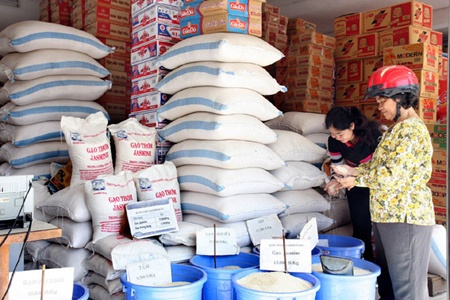Procurement law set to lock in domestic bias for drug sales
Procurement law set to lock in domestic bias for drug sales
A new regulation on drug purchase priorities in the revised Law on Public Procurement will help protect local drug producers.
Adopted by the National Assembly last November and to take effect on July 1, the law stipulates that all locally-made drugs meeting the Ministry of Health’s requirements on treatment, prices and supply can be put out to tender and that equivalent imported drugs will not be allowed to go to tender.
Last year Vietnam centralised its pharmaceutical bidding process for state hospitals.
“Any bidding dossier that includes imported drugs will be rejected. As we can now produce many types of drugs locally, we will not allow the same products from foreign manufacturers,” said Ministry of Planning and Investment’s Public Procurement Department head Le Van Tang.
Under Article 50, drug tenders will receive incentives when they engage in local or international bidding to supply drugs of which domestic production cost is at least 25 per cent of the products’ total cost.
Drug producers with at least 25 per cent female or 25 per cent wounded veterans or disabled people as a proportion of their workforce would also be given priority, as well as small and medium-d enterprises.
“The government will describe these priorities in more detail,” Tang said, adding “These regulations will have local drug producers rejoicing, but will enrage drug importers.”
Vietnam currently has 114 drug producers and thousands of drug importers.
“We are happy with this regulation, as it helps protect locally-produced pharmaceuticals, which have faced serious competition from imported products,” said Le Van Truyen, former Deputy Minister of Health and a representative for SAVI Pharmaceutical Joint Stock Company.
A representative from Lynh Pharma, which imports around 40 types of drugs into Vietnam, said these regulations would make it more difficult for drug importers to do business in the country.
“All active elements for drug making in Vietnam are listed in a group and any imported drugs with any of these ingredients cannot be put to tender,” the representative said. “This will hurt our revenues and profits.”
She said Vietnam had already put price caps on drug bidding. Thus foreign imported drugs with high prices are not selected. “This results in us taking losses as we cannot put them to tender.”
According to her, in the coming months local authorities will apply regulations on examining all imported drugs before they receive customs clearance.
The new regulations are expected to be a big challenge for importers, as it will take several months for the complete examination of a single drug.
“These examinations are going to be a major burden on importers,” the representative said.
Under Vietnam’s national strategy for developing the pharmaceutical sector, by 2020 locally produced drugs would make up 80 per cent of the country’s drug value. At present the rate is 40 per cent.
According to London-headquartered proprietary data, analysis and ratings provider Business Monitor International, Vietnam’s pharmaceutical expenditure rose from $2.84 billion in 2012 to $3.32 billion in 2013.
vir



















